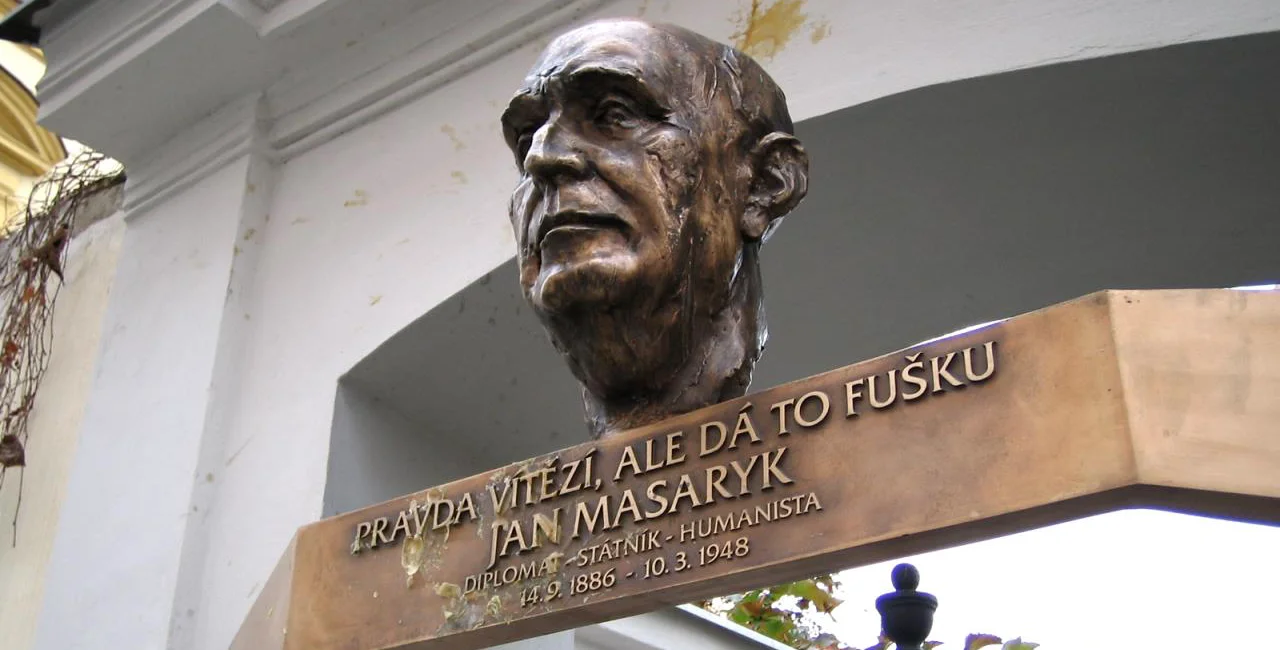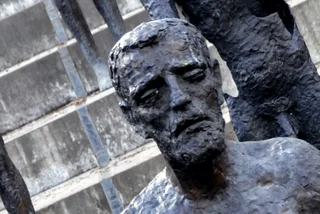Detectives on March 5 closed their investigation into the 1948 death of Czechoslovak Foreign Minister Jan Masaryk without reaching a conclusion at to whether it was murder, suicide, or an accident.
The Office for the Documentation and Investigation of the Crimes of Communism (ÚDV) reopened the case in the autumn of 2019, based on the discovery of an audio recording from 1948 that suggested the body had been moved before it was photographed.
"During the additional inquiry no new facts were found to lead to a convincing conclusion concerning the death of Jan Masaryk," supervisory state attorney Michal Muravský said.
Masaryk fell to his death from a ledge outside a bathroom window at his apartment in Černín Palace (Černínský palác), which houses the Ministry of Foreign Affairs, on March 10, 1948. He was the son of the first Czechoslovak president Tomáš Garrigue Masaryk.
In February 1948, most of non-communist members of government resigned in an effort to force new elections. Instead, a single-party government was formed under Klement Gottwald on Feb. 25, 1948, in what has been called a communist coup. Jan Masaryk remained as the only minister to stay in the Czechoslovak government after the coup who was not a communist or a sympathizer.
Three theories have been put forward after different investigations over the years to explain the death. The original theory, which police came to in 1948 and again in 1969, says it was an accident. Under this scenario, Masaryk slipped on the window ledge. The police offered no explanation for why he was on the ledge and did not say whether or not he had been trying to escape someone.

An investigation in 1995, after the Velvet Revolution, concluded that Masaryk had been forced to commit suicide due to an unknown person directly or indirectly making him jump out of the window. This allegedly occurred during an unlawful search of his apartment.
The third theory 2003, claims that Masaryk was murdered when he was thrown or pushed out of the window by an unknown perpetrator. The ÚDV at the time said there was no chance of tracking down the perpetrator. An expert from the field of forensic biomechanics, Jiří Straus, determined that the fall from the bathroom window was caused by an external force, ruling out a spontaneous fall.
The recently closed inquiry could not confirm this theory. "The active assistance of another person in the fall [of Masaryk] can be neither confirmed nor refuted," Muravský said.
The expert opinion resulting from the new inquiry says none of the three alternatives can be ruled out, Muravský added.
Detectives in 2019 received a recording from early 1968 with testimony of the late police officer Vilibald Hofmann, who had been among the first people to see Jan Masaryk's body in the Foreign Ministry courtyard. Hofmann said Masaryk's body was moved and then returned to its original place but posed in a different position before it was photographed.

Historian Jan Kalous, from the Museum of the 20th Century Memory, confirmed this. Researcher Václava Jandečková informed the investigators about the recording with Hofmann's testimony.
Police also received information from two researchers, Jan Špička and Martin Čermák, studying the mechanism of the fall of Masaryk's body to find out whether he could have jumped out of the window on his own or fallen down accidentally. They concluded that Masaryk could have committed suicide.
"We are bringing back the possibility that it could also have been a suicide. We proved that no external force was needed for Masaryk to end up where he left off," they said.
People who believe that Masaryk was murdered link it to other historical defenestrations in Prague. People being thrown out of windows had figured into Prague history previously in 1419, 1483, and 1618.
They claim Masaryk had been planning to leave Prague for London on March 11. He has spent much of World War II in exile there. They also point to physical evidence such as nail marks on the window ledge. Supporters of the murder theory include Masaryk’s former wife, Frances Crane Leatherbee, former in-law Sylvia E. Crane, and his sister Alice Masaryková.
U.S. diplomat Charles W. Yost, who worked with Masaryk in Prague in 1947, in his 1981 autobiography History and Memory wrote, "The Communists used him and, when his usefulness was past, flung him out of a window to his death."












 Reading time: 3 minutes
Reading time: 3 minutes 



























